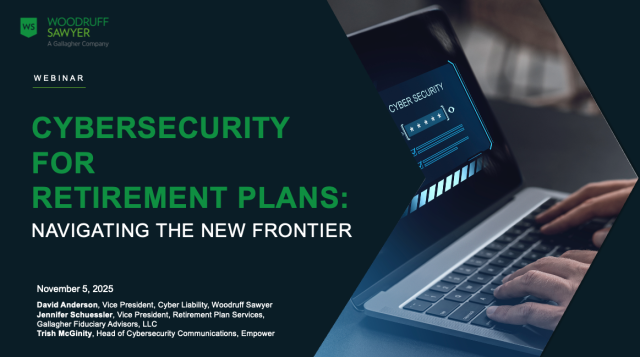Guide
2024 Guide to Cyber Liability Insurance
Twenty-one percent (21%) of S&P 500 companies experienced breaches in 2023, according to a report by SecurityScorecard. IBM states the average cost of a data breach globally last year was $4.45 million—a 15% increase over the past three years.
Fortunately, there are ways to mitigate and transfer this very real risk. That’s where Woodruff Sawyer’s Guide to Cyber Liability Insurance comes in.
The Guide helps businesses understand the ins and outs of cyber insurance, including identifying your organization's unique cyber risks, the benefits of cyber coverage, and what to expect during the placement process.
Get your copy of the report here or read on for more details about the most critical first step: Understanding your cyber exposures.
The Risk Assessment Process
Placing a cyber policy can be complex. Underwriters want to know the unique risks to your organization and how you plan to mitigate them. That’s why the first step in obtaining cyber coverage is fully understanding the scope of your risks.
Identifying Cyber Exposures
First, know your exposures. Common types of cyber exposures include:
- Privacy risk: This involves compliance with regulations and contractual obligations on consumer privacy rights.
- Security risk: Risks in this area include data breaches, phishing attacks, and malware
In 2023, there were more than 6 billion malware attacks globally, according to Statista.
These incidents can have both financial and reputational consequences.
- Production or service losses: A cyberattack can prevent the delivery of your products or services, affecting all clients simultaneously and creating a significant aggregated risk.
- Digital supply chain risk: This cyber risk arises from dependencies on third-party services, such as suppliers and software providers, and exposure to their cyber vulnerabilities.
Modeling Cyber Losses
Modeling cyber losses is crucial for determining how much risk an organization can retain versus what is transferred to a cyber insurer.
The accuracy of this modeling depends on the quality and quantity of data used. To predict potential financial losses, modern tools can simulate various scenarios, such as data breaches, network outages, and software impairments.
Assessing your Cyber Security
Assessing your cyber security capabilities is vital for risk mitigation. Begin by selecting an appropriate framework to evaluate and improve your security posture.
Notable frameworks include the following, which help you identify areas needing improvement and establish a common language for board-level discussions:
- NIST Cybersecurity Framework: NIST is currently the gold standard for any organization benchmarking cyber security capabilities.
- CIS Top 20 Controls: CIS offers a prioritized set of actions divided into basic, foundational, and organizational controls.
- C2M2 Program: This voluntary program can enhance cyber security resiliency through evaluations.
Other critical steps in placing insurance coverage include understanding the key elements of a cyber policy, choosing the proper limits, and having an incident response plan—all of which you can learn more about in Woodruff Sawyer’s 2024 Guide to Cyber Liability Insurance.
Author
Table of Contents













